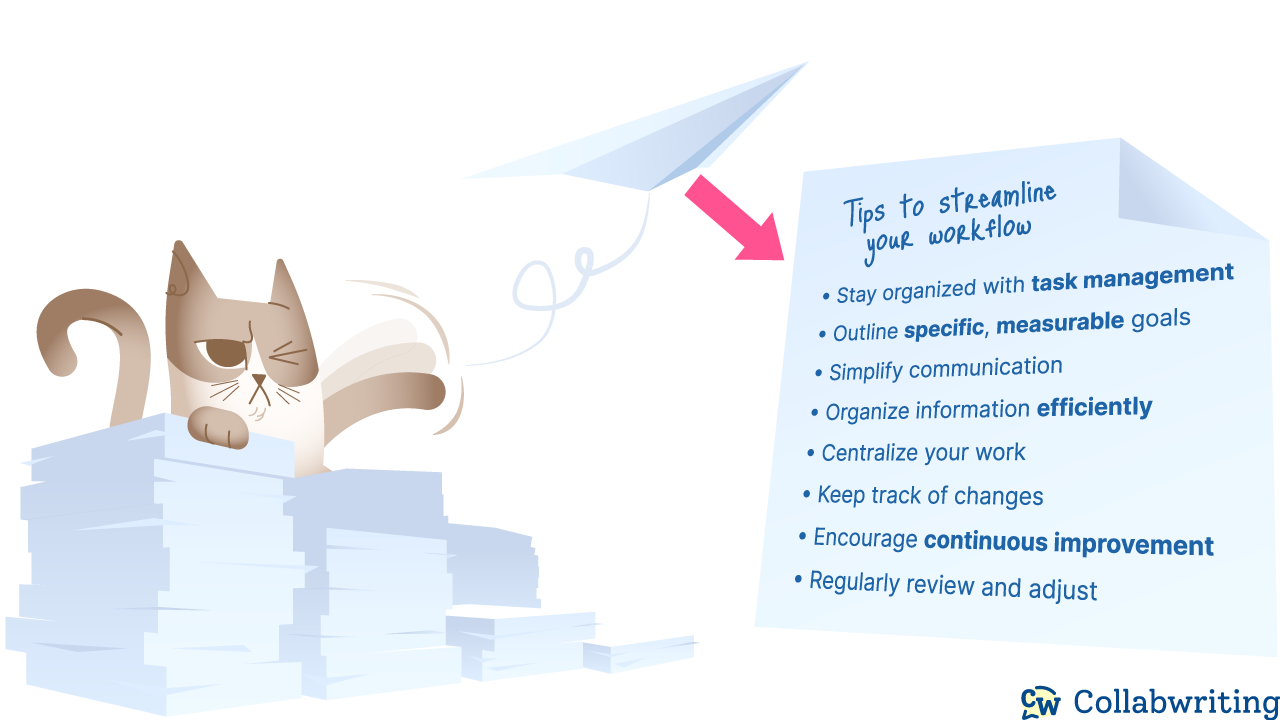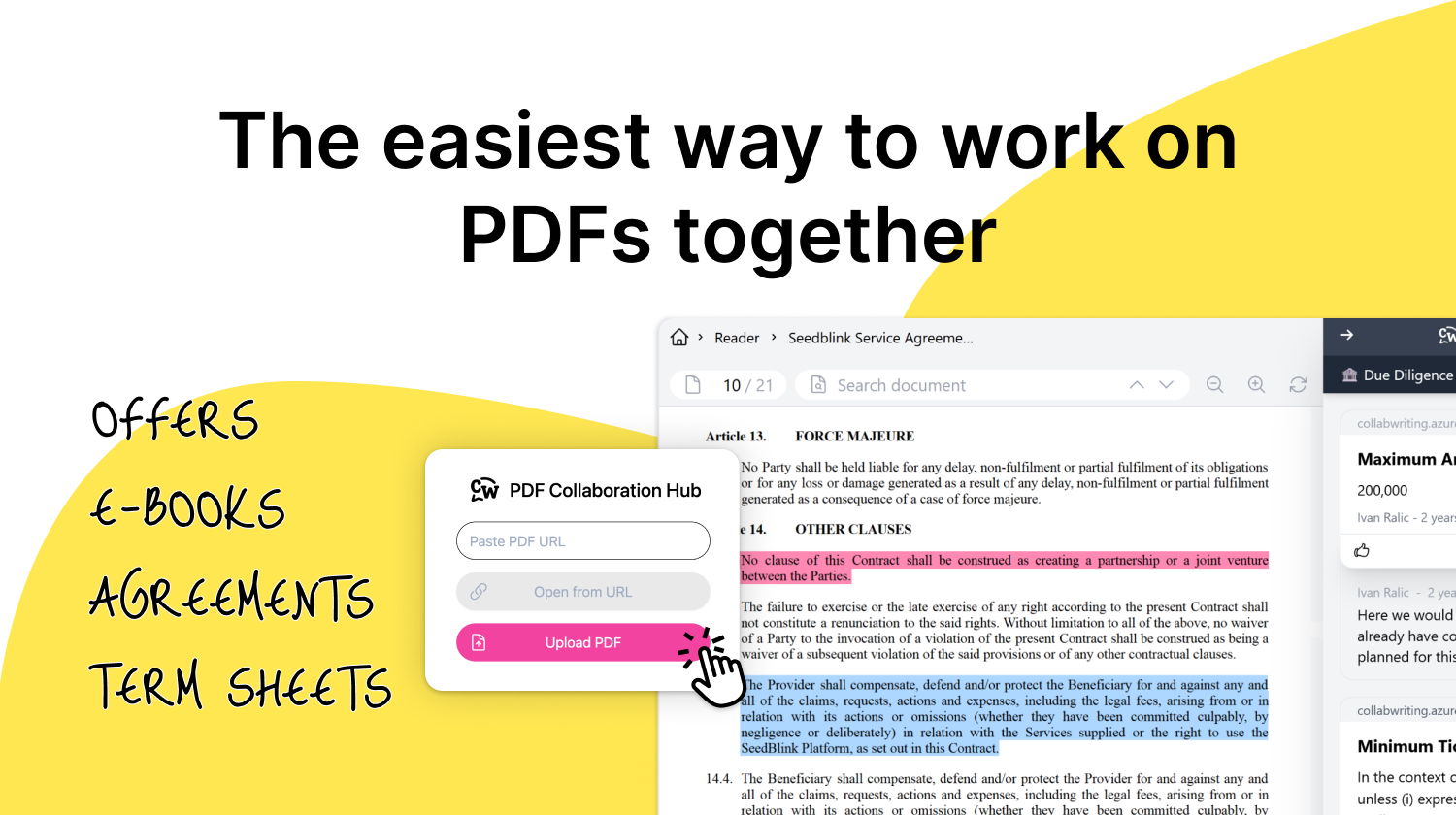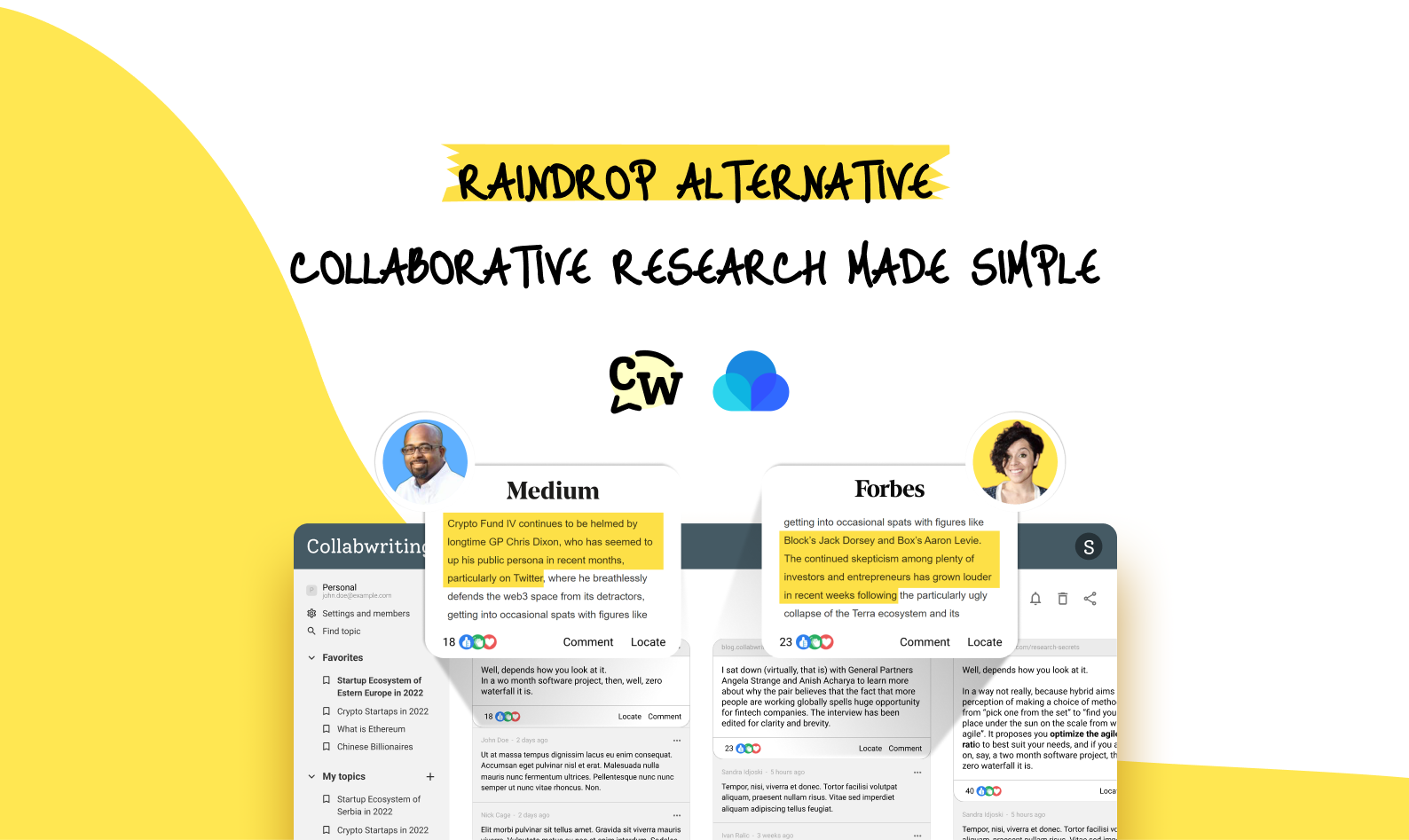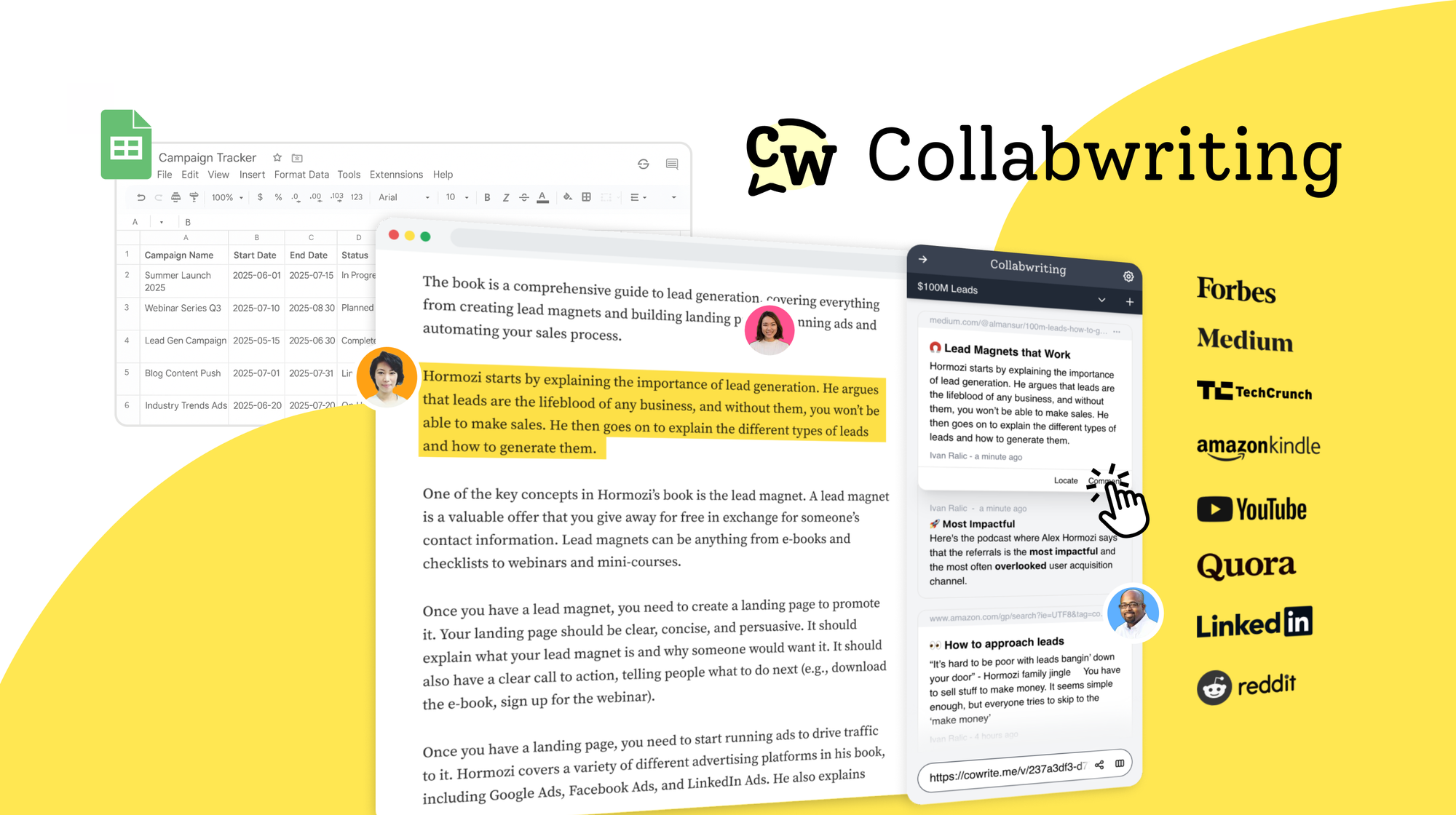With constant notifications, an ever-expanding to-do list, and online distractions, achieving peak productivity can feel like scaling a mountain - especially if you're not a professional climber.
But why do we care so much about being productive?
It's not just about checking things off a to-do list. It's about using our time wisely to achieve meaningful results, reach our goals, and make room for what really matters.
The average knowledge worker spends 103 hours in unnecessary meetings, 209 hours on duplicated work, and 352 hours talking about work. A lot of this time isn’t just unproductive; it’s downright demotivating.
Productivity 101
Many people feel constantly behind because they're not managing their time well. They switch between tabs, tasks, calls, emails, and meetings without focusing on what really matters.
Simply put, they've overlooked (or never picked up) the four main rules of being productive:
💡 Minimize distractions and create a good workspace
💡 Schedule your day around your most productive times (and know when those are)
💡 Establish habits and routines to make your day smoother
💡 Minimize distractions and create a good workspace
Understanding the difference: Efficiency vs Effectiveness
Efficiency and effectiveness are often mixed up, but they highlight different aspects of productivity.
Efficiency means doing tasks quickly without wasting time and focusing on processes and systems.
However, effectiveness is about choosing the right tasks (and tools too!) that match your goals and add the most value.
Think of it this way: You might excel at assembling puzzle pieces quickly (efficiency). However, your effectiveness diminishes if you're working on the wrong puzzle or one that doesn't matter.
Achieving peak productivity hinges on adjusting both efficiency and effectiveness, ensuring tasks are not only completed swiftly but also contribute meaningfully to your objectives.
Productivity killers
By understanding the most common obstacles, you can create strategies specifically designed to overcome them.
Screen interruptions
Today more than ever our screens are constantly buzzing with notifications, making it easy to lose focus. Whether it's social media updates, emails, or news alerts, each interruption pulls us away from what we're working on.
Studies suggest that it takes around 23 minutes, on average, to get back on track after
such interruptions.
Multitasking lies
Multitasking might seem impressive, but it often hurts productivity.
Handling many tabs at once can pull our focus and increase mistakes. Our brains aren't built to handle multiple high-cognitive tasks simultaneously.
What we call multitasking is usually just switching rapidly between tabs - less effective and more draining.
Perfectionism - A trap to avoid
It's great to aim for excellence, but chasing perfection too hard can slow you down.
Perfectionism often leads to procrastination, where the fear of not getting everything perfect stops you from starting or finishing tasks.
Goals without focus
Without clear goals, it's like driving without a destination in mind - any path will do.
When goals aren't well-defined, it's easy to feel busy without really being productive. Goals act like a map, guiding us toward what really matters.
Health and work environment
An uncomfortable chair, bad lighting, or constant noise can really mess with your productivity.
Also, not taking care of yourself - skipping meals or not getting enough sleep - can make you feel tired and less focused
Too many unnecessary tools
Having too many unnecessary tools can hurt productivity.
They clutter things up, confuse, and waste time. When you've got a bunch of tools, it's hard to focus on what really matters. Plus, switching between them all can be a hassle and make you feel tired.
Keeping your toolkit simple with just what you need can help you get more done.
Tips to streamline your workflow
Streamlining processes means finding and fixing inefficiencies to boost productivity, efficiency, and transparency.
Depending on your field and what needs attention, the approach varies, but the aim is always the same: cutting down on waste.
It's important to know that optimizing processes takes time. For the best results, stick with it and keep your team in the loop about every change so they can adjust.
Remember - this isn't something you do alone.
Streamlining processes is a team effort. Good communication, teamwork, and using tools with handy features all play a part in making the work easier and more efficient.
To kickstart optimizing your processes, start by choosing the right tools that cut out inefficiencies and waste.
Let's dive into how you can improve your workflow to boost your company's success!
Stay organized with task management
Chaotic processes often arise from inefficient task management.
When team members are unsure of their responsibilities, they may improvise and work without clear direction. While this might function temporarily, it can lead to problems later on.
Tasks may be overlooked, posing risks to the entire process, project, and organization.
Outline specific, measurable goals
Setting clear, measurable goals is essential for streamlining processes. They provide purpose, motivation, and direction, helping you prioritize tasks, allocate resources effectively, track progress, and make necessary adjustments.
Simplify communication
Use clear channels and tools for effective team communication to avoid misunderstandings and delays.
When information flows smoothly, it boosts collaboration and keeps everyone in sync. This transparency helps the team stay cohesive and productive, leading to better project outcomes for your organization.
Organize information efficiently
Use tools like Collabwriting to organize and annotate research findings in a structured manner. Collaborate with team members by sharing notes and insights easily, ensuring everyone stays informed and can contribute effectively.
This approach improves collaboration and streamlines the synthesis of research data, fostering a more cohesive and productive research process.
Centralize your work
Are you juggling multiple apps to get through your workday? Switching between tabs and applications for communication, task management, research, and project collaboration can scatter your focus.
Centralizing your work in one place is a smart way to streamline your processes. It keeps everyone informed and saves time by reducing the need to switch between tools constantly.
Keep track of changes
Keep track of changes using version control tools or features within platforms like Collabwriting. This helps you keep an eye on edits, track how things are progressing, and keep a clear record of tweaks made to your research data over time.
Checking these changes regularly keeps things clear and helps catch any mistakes or ways to make things better as you go along.
Encourage continuous improvement
Foster a culture of learning and innovation where team members are encouraged to suggest and implement improvements to workflows and processes.
A collaborative approach not only boosts morale but also drives ongoing efficiency gains and keeps everyone engaged in making meaningful contributions to the team's success. Regular feedback sessions and recognition of innovative ideas further support this culture of continuous improvement.
Regularly review and adjust
Schedule periodic reviews to assess progress, identify bottlenecks, and make necessary adjustments to keep processes efficient and effective.
This proactive approach ensures that your team stays responsive to changing needs and market conditions, promoting continuous refinement of strategies and workflows for optimal performance.

Closing thoughts
So, as you work on streamlining your workflows and improving productivity, remember that it's all about working smarter, not just harder.
By implementing these tips slowly, you'll find yourself and your team becoming more efficient and effective. Whether it's choosing the right tools, setting clear goals, or fostering a culture of continuous improvement, each step counts towards achieving better results.

Collabwriting - Shareable Notes on Web Pages and PDFs
Collabwriting allows you to gather all your online sources in one place. Just highlight, save, and collaborate with anyone on any content you find online.




![The Best Tool for Collaborative Research in Content Marketing Teams [2026]](/content/images/2025/12/image--5-.png)

![5 Tools Marketers Use to Organize Research - Compared [2026]](/content/images/2025/11/cover-4-1.png)

![Build Credibility in Research: Smart Way to Verify Information and Track Sources Easily [2025]](/content/images/2025/10/covers-for-blog--7--1.png)

![How Marketers Can Turn LinkedIn Content into Collaborative Research [2025]](/content/images/2025/10/covers-for-blog--8-.png)
![Best Readwise Alternative for Personal & Team Research [2026]](/content/images/2025/09/Frame-814--3-.png)

